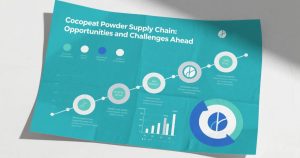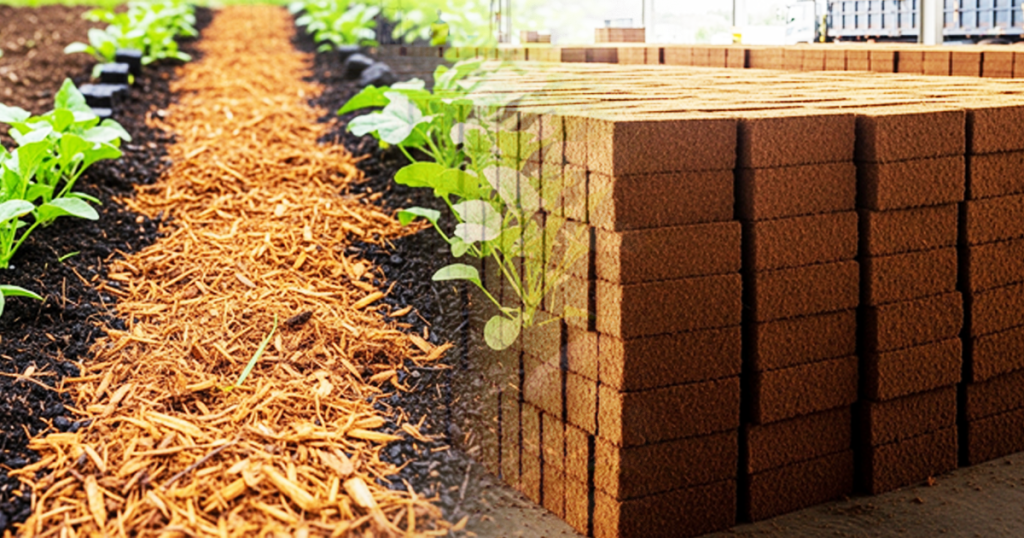A New Wave in Sustainable Agritech
In recent years, environmental concerns have pushed industries to seek sustainable alternatives across the board. Among the latest solutions to gain traction is cocopeat powder an eco-friendly byproduct of coconut processing. Once regarded as mere waste, cocopeat has evolved into a vital component of soil enhancement and hydroponic systems.
Now, innovative startups are transforming this humble material into high-value products for modern agriculture. As a researcher who has worked extensively with cocopeat, I’ve witnessed the dramatic shift in how this material is perceived.
Early studies into its water retention and aeration properties hinted at enormous potential. Fast forward to today, and a new breed of entrepreneurs is commercializing this potential through smart, scalable solutions that target global farming challenges.
These startups aren’t just chasing profit they’re reshaping the agritech landscape with sustainability at the core. From India to Indonesia and even parts of Africa, startups are harnessing local coconut waste to fuel innovation. What once contributed to landfill issues is now repurposed as a premium growing medium.
With climate change challenging traditional agriculture, cocopeat’s role in supporting resilient food systems is more relevant than ever.
Startups Leading the Cocopeat Charge
AgriTech Labs and Smart Substrates
One standout in this emerging sector is AgriTech Labs, a Singapore-based startup that develops precision-grade cocopeat substrates. Their proprietary method refines raw cocopeat into a powder with consistent pH and EC levels, meeting the rigorous standards of commercial greenhouses.
What sets them apart is their focus on customization creating blends tailored to specific crops like tomatoes, strawberries, and lettuce. Their R&D team, composed of soil scientists and agronomists, leverages data analytics to optimize the substrate performance.
They even integrate sensors to monitor moisture retention and nutrient delivery in real-time. This level of sophistication underscores how far cocopeat innovation has come since its early adoption in backyard gardening.
EcoSoil Africa: Local Impact, Global Vision
Another compelling example is EcoSoil Africa, a startup operating out of Kenya. They process coconut husks from coastal regions and convert them into fine-grade cocopeat powder for domestic and export markets. Their mission goes beyond product development they aim to empower smallholder farmers with affordable, high-yield growing media.
By offering training and equipment, EcoSoil helps farmers transition from depleted soils to more productive systems using cocopeat. Their success illustrates how cocopeat can be both a business opportunity and a tool for social impact.
With African countries facing rapid population growth and food insecurity, sustainable innovations like this are vital. EcoSoil’s model is a testament to how simple organic materials, when coupled with vision and science, can spark transformative change.
Rising Demand and Industry Challenges
The global shift towards organic farming and urban agriculture has created a surge in cocopeat demand. Market analysts project a compound annual growth rate (CAGR) of over 5% for cocopeat-based substrates through 2030. But growth doesn’t come without obstacles.
One pressing issue is quality control, especially with smaller startups entering the space without adequate processing infrastructure. Contaminants such as salt and dust must be meticulously removed to meet export standards.
Inconsistent grading and lack of standardization remain barriers in developing a trustworthy global supply chain. This is where research and technical partnerships can make a crucial difference. By establishing universal testing protocols, the industry can elevate cocopeat from an alternative to a primary substrate.
Startups are beginning to address this by collaborating with universities and agricultural research institutes. These alliances foster data-driven improvements and help ensure that innovation does not come at the cost of reliability.
As both a researcher and observer, I find this collaboration between science and entrepreneurship particularly exciting.







